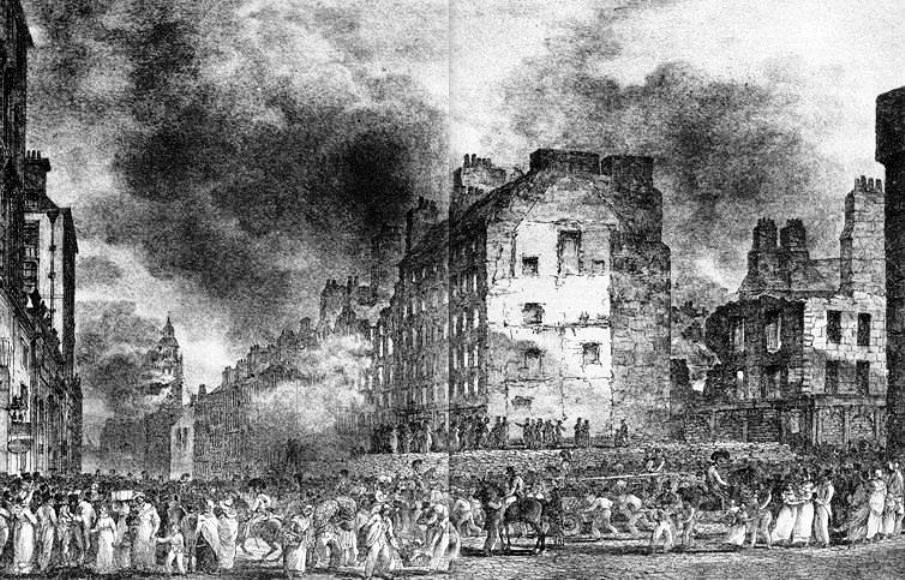The Great Fire of Edinburgh | 1824
16th Nov 2021
By Simon Bendle, Mercat Storyteller
The Great Fire of 1824 was one of the most devastating in Edinburgh’s history. It began on the night of 15 November, raged for days, destroyed dozens of buildings, killed at least 10 people, and left many more severely burned, injured or homeless.
Here’s how the tragedy unfolded:
10pm, Monday 15 November
Fire breaks out in a tenement at the head of Old Assembly Close, one of the Old Town’s many narrow medieval alleys. Edinburgh’s firemen – untrained and disorganised – fail to subdue it. The heat is intense. People flee their homes and throw furniture and clothes into the street. Flames spread quickly to adjoining tenements.
3am, Tuesday 16 November
Fire is raging out of control, tearing through buildings and streets around its source. The height of Edinburgh’s ancient tenements and the narrowness of its medieval streets hamper efforts to quell it. A 109-year-old army veteran is carried to safety on the back of his daughter, herself clearly no spring chicken.
11am, Tuesday 16 November
A large section of the High Street around Bell’s Wynd and Old Assembly Close is reduced to smouldering ruins. More than 12 hours after the fire began, progress is finally being made getting it under control. The worst seems over.
Midday, Tuesday 16 November
Sparks carried on the wind reach the nearby Tron Kirk and its ancient wooden spire flashes into flame. The lead frame of the spire melts, sending rivers of molten lead down the side of the church. At 4pm the spire collapses. There is another lull. Again, the worst seems to have passed.
10pm, Tuesday 16 November
Yet more flames are seen coming from the top floor of a tall building in Parliament Square, 200m up the High Street. The medieval skyscraper quickly collapses. The conflagration reaches as far as St Giles’s Cathedral, scorching its outside walls.
Night-time, Wednesday 17 November
Fires burn through the night and into the next day until heavy rain on the Wednesday night finally brings calm. In the days that follow, gutted buildings – some 10-storeys high – collapse or are pulled down with ropes.
Edinburgh hadn’t seen anything like it since an English army, sent north by King Henry VIII, razed the city three centuries earlier. But good came from catastrophe. Plans to create a modern, efficient fire brigade – already in place - were sped up. And by the end of the year, Edinburgh had one of the world’s first municipal fire brigades, its leader the inspirational James Braidwood, a man today regarded as the father of the British fire service.
Join one of our history walks to find out more about the Tron Kirk, St Giles’s Cathedral and Edinburgh in the 19th century

